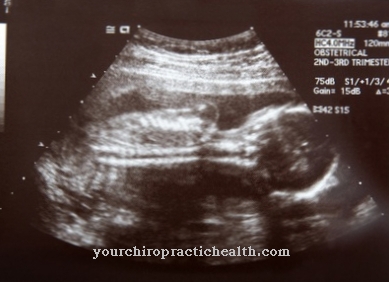In our Subconscious All impressions, ideas, wishes, actions and memories that are currently not active are saved. The subconscious is different from the unconscious. These are body processes that we do not think about, i.e. breathing, heartbeat and blood circulation.
What is the subconscious?

The subconscious is that area of the psyche that is not accessible to us. It is a significant part of our being and subordinate to consciousness. Dreams are considered the language of the subconscious. Over 90% of our thoughts and actions are controlled by the subconscious.
The subconscious ensures that many actions take place automatically and thus relieves the consciousness. When we are awake, the subconscious acts like a filter. It processes every thought and does not evaluate good or bad.
The subconscious learns through repetition. The more often it is presented with certain information, the more strongly such statements about existence become manifest. For example, while reading, the subconscious works with us. Because everything we absorb while reading is compared with the subconscious knowledge, memories, wishes and ideas. While reading, we not only take in facts, but also have an individual impression of what has been read, which is processed in the subconscious.
The subconscious also perceives things that our brain would be overwhelmed with if it were consciously absorbing them. In this way, all perceptions that are not related to the current activity are picked up by the subconscious. Otherwise we couldn't concentrate on one activity.
Function & task
Since Sigmund Freud founded psychoanalysis, the subconscious has been discussed controversially. According to Freud, repressed content is stored in the subconscious that we would consciously censor. The repressed continues to work in the subconscious and, if it is not “brought to light”, can lead to emotional disturbances.
Psychoanalyst C. G. Jung describes the collective subconscious that has stored experiences from all of human history. These assumptions about the psyche are difficult to verify empirically, but have been proven on the physiological side, for example, in epigenetics, in which individual and collective experiences are biologically inscribed.
Neurolinguistic programming sees everything in the subconscious that eludes the momentary attention. Even if we don't realize it, the subconscious controls most of our actions and feelings.
Thoughts trigger electrical impulses and chemical reactions in the brain. As soon as the brain receives an electrical impulse, reactions occur. It reacts to the thought and chemical control substances are released. The central nervous system is made ready to generate appropriate reactions.
On the day of birth, neither the conscious nor the subconscious is well developed. From now on, every picture, every stimulus, every touch, every spoken word shapes the subconscious.
Thoughts that we have permanently recorded are particularly strong. But whether true or not, our subconscious memorizes all of the information acquired. In this way, we also save useless, superfluous and untrue statements and consolidate them. This knowledge makes extensive use of advertising, for example.
Humans are creatures of habit and tend to develop unconscious patterns of action and thought and act accordingly. Although we believe that we are making mostly rational and sensible decisions, most of our decisions are subconsciously directed.
You can find your medication here
➔ Medicines for relaxation & nerve strengtheningIllnesses & ailments
We cannot simply call up information from the subconscious. To do this, certain techniques must be used that psychologists, psychotherapists, psychoanalysts or hypnotists have mastered.
In the case of many psychosomatic illnesses, traumatic experiences and the resulting difficulties in dealing with other people, the subconscious can be used for conflict resolution and healing. We hear again and again of spontaneous self-healing, even in patients who are supposedly out of therapy. In these moments the subconscious was active.
While the subconscious was once seen as the place of dark forces, medicine today makes use of its immense power. Thoughts can heal illnesses, but they can also make you sick.
The thoughts and attitudes of our minds can even influence and change our genes, which is again a reference to epigenetics. Research has shown that two people with the same genetic makeup, the same disease, the same chance of recovery and even the same treatment method develop completely differently. One can die, the other can get well. This is only influenced by the power of thought and individual belief systems.
When treating physical illnesses, doctors try to "tap into" the subconscious. People who repeatedly experience problems in dealing with others, feel permanently unhappy and depressed, often seek therapeutic help after a certain period of stress. The psychotherapist uses different methods of treatment.
In relaxed brain states, the subconscious mind absorbs information even more intensively, so that the therapy works particularly well in a resting state. Old, harmful thoughts are overwritten and replaced by healthy ones. In this field there is analytical psychotherapy, depth psychological psychotherapy and behavior therapy. Dialogue psychotherapy and systemic therapy are also scientifically recognized.
In analytical psychotherapy, unconscious processes are made conscious, whereby the incomprehensible can be consciously experienced. In the course of treatment, a pattern can be seen in how the client treats other people and himself. The treatment provides a deeper understanding of yourself, from which a new way of dealing with other people can be learned.
Since patterns of behavior and ideas that have become established in the subconscious over many years cannot be replaced by new ones in a few days, depth psychological psychotherapy is a long-term therapy.
























.jpg)



